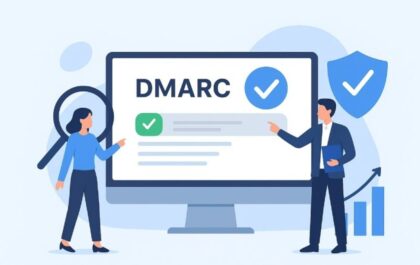User acceptance testing is usually the last major step before your hand over the software. If all stakeholders are happy, you get to work on a new project or even make more money on maintenance. It also means that failing UAT is not just frustrating, but an expensive experience. Check our tips to make UAT a success.
Table of Contents
ToggleWhat is User Acceptance Testing?
User acceptance testing is a set of checks performed by the end-users to validate that software meets their functional and non-functional requirements. Although project requirements should have hopefully accounted for all needs, only testing by everyday users would really confirm that.
User acceptance testing tools are a common aid for closing this last step. End-users are expected to do and share things that normally QA specialists do. UAT software helps teams to bridge the gap by making the testing process accessible enough to non-tech people yet technical enough for troubleshooting.
Tips and best practices for UAT
While your experience with end-users will largely depend on the project, we compiled a list of UAT best practices to help you navigate it.
- Get a diverse user group for testing. Passing UAT often means meeting the lowest common denominator. If the client is not too picky about the end-users involved, you as a vendor may actually be happy. Still, actually passing UAT means engaging with as many different users as possible.A good example here would be creating software for a Big Four accounting firm’s audit department. You want the software to respect the time of crops of fresh graduates that use computers with their eyes closed. The solution should also be advanced enough for senior personnel to guide employees through potential mistakes. Last but not least, managers and partners with little recent experience in day-to-day operations should be able to access and visualise progress.
- Pick the right UAT tools. Proper user acceptance testing means that end-users interface with not just the software, but the people behind it (even if indirectly). Your issue management solution should have the collaborative functionality to make them cooperate. It also needs to provide or support a layer of simplification, such as simple bug report templates or intuitive test cases.The market has lately seen a rise of visual bug reporting tools, and they are perfect for UAT too. Solutions like Capture make it easy for end-users to report issues by screen recording. The vendor specialists, on the other hand, also receive a log of actions and perhaps even the troubleshooting data from Chrome DevTools. Easy for UAT testers, practical for regular QA specialists.
- Create clear test cases. End-users may misunderstand the purposes of UAT, especially if their employer did not take the time to explain it. The primary idea is to make sure that the software indeed meets the requirements that were agreed with the client at the start of the project.On the other hand, UAT may (to the client’s detriment) reveal that the software does not solve one of the key tasks that the employee should do with it. This can and should be documented by people performing UAT so you and the client can discuss the feasibility of adding missing features.
- Do UAT often. Our advice is simple: don’t wait until the project is nearly complete before you test with end-users. This may take some convincing, but the client would also appreciate you saving them money even if they don’t understand that yet. The more iterations of UAT you have, the less expensive it gets to incorporate feedback.The Big Four firm example from earlier fits here as well. If you are doing an audit-specific tool, invite auditors to test working papers even if manager features are not ready yet. If you are doing a company-wide solution, invite accountants even if consultancy modules are not ready yet.
- Make user acceptance testing feel realistic. You are not a theatre director expected to nail suspension of disbelief. Still, it would help end-users be more focused if they work with reasonable names, labels, and figures. There are a good number of tools that generate realistic dummy data while keeping your GDPR-compliant.
- Validate that your test scenarios are realistic, too. While it is always a good idea to make a solution fail-proof, one of our user acceptance testing tips is simple: don’t go overboard. If you discover that a financial audit software can’t handle 1,000 people on the project and there is no simple fix, just remember that the firm won’t assign so many auditors anyway. When in doubt, consult project requirements.
- Brief the end users before you start testing. The traditional approach would be briefing the middle management so they get the information across to people on the ground. When you have a subject matter expert on staff, it is not uncommon if they engage with end-user directly to outline the testing process and answer business questions.
- Collect feedback and help testers when needed. You’ll usually get in-scope UAT complaints, out-of-scope wishes & needs, and also just general remarks that something work or does not work. You will need to follow up proactively. The more time users sit on something that is not working, the more likely it is to be pinned on you.
- Formalise the UAT findings. At the start of the project, you usually have agreed on a number and severity of issues that the software can still pass the UAT with. Your task now is to find all issues, categorise them, and see whether it is indeed possible to let a smaller team just fix those. Make sure to bring context in case the client stakeholders disagree.
- Show flexibility while assessing your capacity. Unless this is a one-off low-profile project, it usually helps to be accommodating during user acceptance testing. You could agree to add features at your regular rate if UAT revealed a glaring hole that nobody saw. If the software is handed over to internal tech teams, you may volunteer to stick around for the handover to smooth the transition. Money talks, but it is even better when people talk about you so you make more money.
Conclusion
User acceptance testing is the last major milestone of initial product development. Completing UAT means that the product is ready for primetime and potential handover for maintenance. Following the best practices above will simplify testing with end-users and secure you more business with positive customers.
Related posts
Hot Topics
Best DMARC Lookup Tools: Instantly Check & Verify Your DMARC Records
Choosing the best DMARC lookup tools is essential for any organization that wants to secure its email domain and prevent…
How Financial Advisor Platforms Are Adapting to Gen Z Investors
Gen Z in Europe is reshaping the investment landscape at remarkable speed. Nearly all of this generation are digital natives,…



